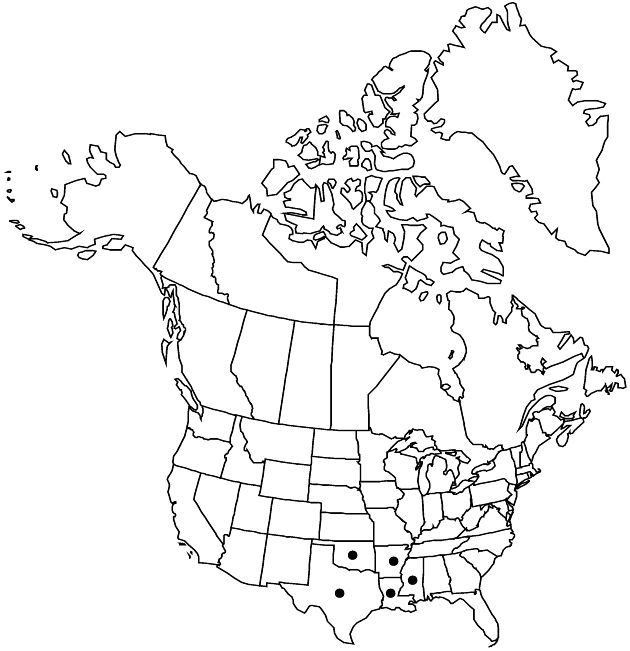Difference between revisions of "Vernonia texana"
Fl. S.E. U.S., 1338. 1903.
FNA>Volume Importer |
imported>Volume Importer |
||
| (5 intermediate revisions by 2 users not shown) | |||
| Line 7: | Line 7: | ||
|year=1903 | |year=1903 | ||
}} | }} | ||
| − | |basionyms={{Treatment/ID/ | + | |special_status={{Treatment/ID/Special_status |
| + | |code=E | ||
| + | |label=Endemic | ||
| + | }} | ||
| + | |basionyms={{Treatment/ID/Basionym | ||
|name=Vernonia angustifolia var. texana | |name=Vernonia angustifolia var. texana | ||
|authority=A. Gray | |authority=A. Gray | ||
| + | |rank=variety | ||
| + | |publication_title=in A. Gray et al., Syn. Fl. N. Amer. | ||
| + | |publication_place=1(2): 91. 1884 | ||
}} | }} | ||
|synonyms= | |synonyms= | ||
| Line 34: | Line 41: | ||
-->{{#Taxon: | -->{{#Taxon: | ||
name=Vernonia texana | name=Vernonia texana | ||
| − | |||
|authority=(A. Gray) Small | |authority=(A. Gray) Small | ||
|rank=species | |rank=species | ||
| Line 48: | Line 54: | ||
|publication title=Fl. S.E. U.S., | |publication title=Fl. S.E. U.S., | ||
|publication year=1903 | |publication year=1903 | ||
| − | |special status= | + | |special status=Endemic |
| − | |source xml=https:// | + | |source xml=https://bitbucket.org/aafc-mbb/fna-data-curation/src/2e0870ddd59836b60bcf96646a41e87ea5a5943a/coarse_grained_fna_xml/V19-20-21/V19_259.xml |
|tribe=Asteraceae tribe Vernonieae | |tribe=Asteraceae tribe Vernonieae | ||
|genus=Vernonia | |genus=Vernonia | ||
Latest revision as of 19:50, 5 November 2020
Plants 4–8(–10+) dm. Stems puberulent, glabrescent. Leaves basal and cauline; blades ovate-lanceolate (basal) to narrowly lanceolate (distal), 5–12+ cm × (5–)12–25+ mm, l/w = 3–5 (basal) or 8–17 (distal), abaxially glabrate (pitted, awl-shaped hairs in pits), adaxially puberulent and/or scabrellous. Heads in open, paniculiform-scorpioid arrays. Peduncles 1–35 mm. Involucres ± obconic to hemispheric, 4.5–6 × 5–7 mm. Phyllaries 35–45+ in 5–6+ series, glabrescent, margins arachno-ciliolate, the outer lance-deltate, 1–32 mm, inner oblong to linear, 4–5(–6) mm, tips acute or rounded-apiculate. Florets 12–24+. Cypselae 2–3 mm; pappi usually whitish to stramineous (rarely purplish), outer scales or bristles 20+, 0.3–1+ mm, contrasting or intergrading with 20+, 6–7+ mm inner subulate scales or bristles. 2n = 34.
Phenology: Flowering Jun–Aug.
Habitat: Pinelands, scrub oak woodlands, sandy or sandy-clay soils
Elevation: 60–200 m
Distribution

Ark., La., Miss., Okla., Tex.
Discussion
Selected References
None.